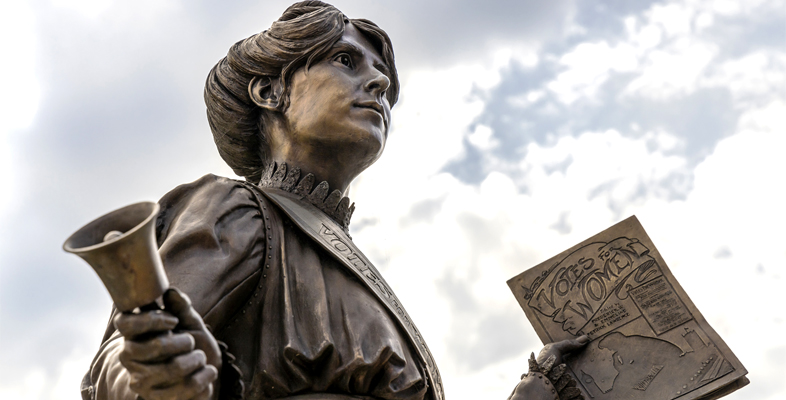7.3 Economic roles and cultural identities
Inevitably, so far, this course has concentrated on the main goal of the women’s suffrage movement. But before this course concludes, it’s worth mentioning once more that the ‘Votes for Women’ campaign was linked with a broader set of issues with respect to improving women’s lot socially and economically, and challenging cultural assumptions about the roles and abilities of women.
The women’s suffrage movement didn’t just seek the vote as an end in itself. It hoped that the economic position of women, together with their legal rights and educational opportunities, would be improved by making the state accountable to female voters. You will remember that Ada Nield Chew came to the suffrage movement after actively working for women workers’ rights but, in the years before the First World War, the potential improvements in working conditions and welfare were often seen by women, as well as men, as alternatives to granting universal adult suffrage. This initially had the effect of dividing the women’s movement. Yet the movement presented a cultural identity of women as intelligent, rational, resourceful and capable of taking the initiative – ideas that seem common sense to many now, but which still need defending in the twenty-first century.
As it turned out, in the decade that followed women gaining the vote in 1918, a series of measures were introduced that aimed to improve women’s lives. It became illegal to bar women from jobs because of their sex; women gained the power to divorce their husbands for adultery; widows were granted state pensions; and an equal pay campaign was begun. This was just as key members of the women’s suffrage movement had hoped.
In terms of changing the cultural perception of women, this was a longer-term goal that could be achieved only gradually. There were people at the time who argued in all seriousness that women were naturally less intelligent than men because their brains were smaller, and that women were such emotional beings that they could not be trusted to make a sound political judgement.
This was one reason why celebrating the achievements of women past and present was important to the female suffrage movement. The movement encouraged a cultural perception of women as clever and resourceful, thereby undermining popular prejudices. The Women’s Coronation Procession of 1911 included a historical pageant of famous women who had achieved great things. Women were also keen to wear academic gowns on such occasions to show their educational achievements at universities. Later, the war years of 1914–18 created another opportunity to highlight the abilities of women, as they contributed to the war effort and took on jobs usually done by men.
Activity 10 What have you learned?
Look back at this course and answer the following questions:
1. When were the National Union of Women’s Suffrage Societies (NUWSS) and the Women’s Social and Political Union (WSPU) formed?
Discussion
The NUWSS was formed in 1897; the WSPU was formed in 1903.
2. What was the key difference between the NUWSS and the WSPU?
Discussion
The main difference between the two organisations was that the WSPU used militant tactics in its campaign to obtain the vote, sometimes breaking the law, whereas the NUWSS used peaceful, law-abiding tactics.
3. In which respective years did women over the age of 30 and women over the age of 21 obtain the vote?
Discussion
Women over 30 obtained the vote in 1918; women over 21 obtained the vote in 1928.
